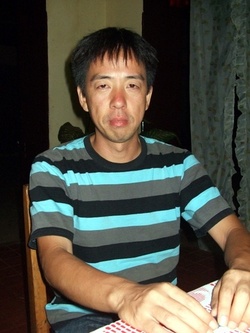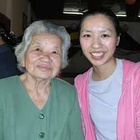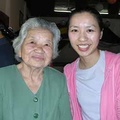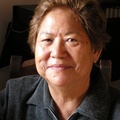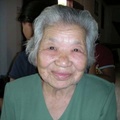43 years old. Born in Okinawa Prefecture.
When I was living in Naha City, I was participating in a volunteer group with a Japanese-Peruvian family of friends when I happened to come across an article that said, "Japanese-Peruvian people from Okinawa in Liberalta want to learn about Okinawa."
So I thought maybe I could be of some help.
This was how I discovered Liberalta.
* * *
When a Bolivian he had met through volunteer work returned to his home country, he visited Bolivia for the first time.
After studying Japanese language education, I became a Japanese language teacher at the La Paz Japanese Language School as a Japanese community youth volunteer from 2004 to 2006. My two years in La Paz was my first teaching experience. During this time, I also had the opportunity to visit Riberalta in northern Bolivia for the first time.
After two years of volunteering, I returned to Japan temporarily, leaving my belongings behind in Bolivia.
After returning to Bolivia, I worked at the Santa Cruz Japanese Language School for seven months, then drove three days to Riberalta in my car, which I had bought in Santa Cruz.
Volunteers had never been involved in the Japanese community in Guayaramerin, in northern Bolivia.
I continued commuting between Guayaramerin and Riberalta for about two years.
In collaboration with Jaika volunteers in Liberalta and Japanese people in Guayaramerin and Liberalta, we produced a local television program called "Hola Japon!"
I want people to know about the existence of the Japanese American Association.
I want Japanese people to feel a connection to Japan, the land of their ancestors.
I hope that non-Japanese communities will use this opportunity to gain a greater understanding of the Japanese people living around them.
These were the three goals that we set out to achieve when we started the show. We also tried to make the show enjoyable for anyone to watch.
This helped them to become more aware of Japanese communities and Japanese culture.
There was a lot of feedback saying, "That show is interesting!" I was happy.
They also taught dance and participated in parades at city events as part of the Japanese Association.
We held a cooking class using only locally available ingredients.
Yakisoba, omelet rice, teriyaki, pork ginger, and taco rice.
I never found it difficult in Riberalta, Guayara, but I did have some trouble when my house in Guayaramerin was robbed and my camera, computer, clothes, etc. were stolen.
Around the same time, I heard about my younger brother and uncle's illnesses and decided to return to Japan.
The TV show also aired its final episode in 2008.
For a while after returning home, my mind was blank and I had no idea where to go or what to do.
I stayed in Okinawa for a while, but then I decided to work in a factory in mainland Japan. I wanted to know what kind of life the people I had sent from Bolivia were living in Japan, and I thought that if I worked as a migrant worker, I could be of some use in some way someday.
What made him decide to return to the fields of South America was the death of his uncle, who had supported his activities overseas.
Currently, they are touring eight small Japanese communities in regional cities in Brazil to introduce and teach dance. At the Japanese Cultural Festival, 100 dancers performed on stage wearing their community's happi coats.
He hopes to continue contributing to the Japanese community in the future.
* * *
Although they are both Japanese communities, Beni and Santa Cruz started from different points of origin.
The Santa Cruz settlement is for families.
Many Beni people are single men who came to Japan alone as migrant workers and married local women. As a result, the Japanese language and culture were no longer passed down from the second generation onwards.
There was also a difference between the prewar and postwar periods, and during the war Japan and Bolivia became enemies, so there was no choice but to eliminate anything related to Japan. During the transition period from the first generation to the second generation, there was no Japanese consulate in Bolivia, and the Peruvian embassy was in charge of the matter. This made the family registry issue even more complicated.
The future of Japanese society
First of all, I think it would be best to start by letting people know about the existence of the Japanese community. Japanese language education is very important, but if you focus too much on that, only people who want to learn will gather. I think it would be better to start with karate classes, origami classes, or other things that anyone can attend. Even if you don't directly teach Japanese, I think it's important that there are Japanese people around all the time.
First, we all get together and have fun playing something Japanese. Then, I think it would be good if people could think, "Japanese people are pretty great."
My time at Liberalta is what I am making the most of now.
I look forward to meeting my friends again someday.
*Reprinted from the blog " Japanese who crossed the Andes " by a JICA volunteer.
© 2011 Shoko Hibino


